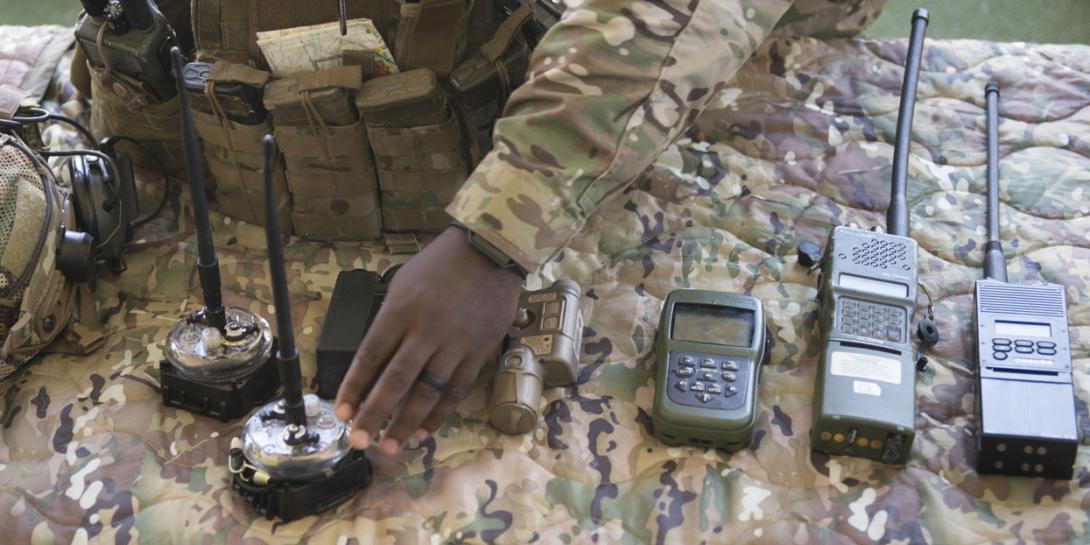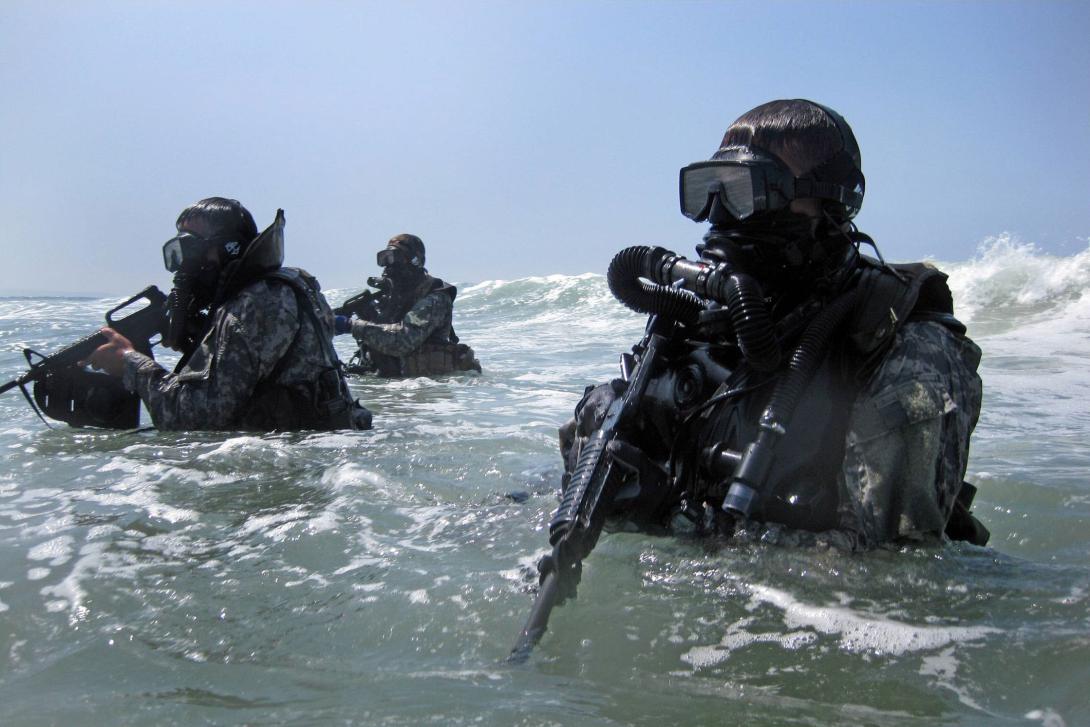SOCOM Seeks to Unleash Connectivity
Cutting the communications cord is a goal of the U.S. Special Operations Command as it prepares for missions against a new type of foe. The command is not looking to sever ties with its forces in the field, but instead wants to give them broad-based connectivity to function without being restricted by either environment or operating partner.
The command has a diverse mission set that is constantly shifting based on geostrategic and local requirements. Yet the drive for networking independence is being prompted by changes in adversaries, not missions. In the past, new tasks and objectives might have sparked technology revolution, but now the emergence of near-peer adversaries as primary geostrategic opponents is changing how the Special Operations Command (SOCOM) communicates.
“Our functional area is changing all the time, so we will always be reacting to technological change and seeing if it provides an operational advantage,” says John Wilcox, SOCOM’s J-6/chief information officer. “But the real change that we’re seeing now and in the foreseeable future is the change in threat.”
New threats pose much greater challenges in communications and cybersecurity than the threat of violent extremism, and so will future threats, he notes. SOCOM has focused on fighting extremist threats for the past 16 years. After operating in the relatively uncontested airwaves of Iraq and Afghanistan, the command is re-examining its cyber and electronic warfare capabilities.
Facing these new threats, SOCOM has adopted a philosophy of improving communications by untethering special operations forces (SOF) operators and commanders, Wilcox states. His vision for mobility would remove the need for anyone in the field to plug into an existing network. “Any capability, whether it’s wireless, or any form of transport that gives our operators the ability to work untethered, is of interest to us,” he declares. “The whole premise is to avoid being tied down to a physical location or a physical plant. There are a lot of options that can be used to create an untethered environment.”
Wilcox continues that SOCOM wants to be able to transition communications connectivity from one transport method to another easily. “We don’t want an operator to have to carry five different capabilities. We would prefer [that operator] to have a device that can sense the best transport method. That would ease the burden on the operator, because we tend to give them a lot of capability, but sometimes we don’t make it easy to use all that capability,” he points out. “I’d like it to be an autosensing device … so they don’t know, and maybe even don’t care, whether it’s a radio signal, a Wi-Fi signal, commercial cellular or a satellite that gives them connectivity.”
At the top of the command’s wish list is next-generation satellite capability. Wilcox says the work being done in medium- and low-earth-orbit constellations applies to future SOF uses. These satellites would provide high-bandwidth, low-latency global coverage to suit SOCOM’s needs.
Wilcox emphasizes that SOCOM will rely on both Defense Department and commercial satellites that will reach orbit now and in the near future. The department will focus on the satellite communications capabilities that only government can deliver, he says, and commercial capabilities will round out requirements and provide SOCOM elasticity.
Mobile technologies will play a major role in the untethering effort. SOCOM will be increasing its involvement in the NSA’s Commercial Solutions for Classified Program. This allows private encryption layers to reach a classified level, which reduces the force’s requirement for Type 1 encryption devices. It opens the door to SOCOM using commercial cellular and Wi-Fi technologies to a greater degree.
At the same time, the command will be following traditional military tactical radio programs, Wilcox says. He points out that SOF midlevel command posts still set up tents and wires. All the better for that command and control capability to be on the move or to be set up quickly at the halt, he states.
Carrying out a mission also calls for SOF to be able to reach back for information. The architecture enabling this capability must be balanced between efficiency and efficacy, Wilcox points out. The most efficient method is data centralization, but that approach entails risks in disrupting information transport, for example. Such side effects must be considered when striving to ensure continuity for the operator at the end of the network. “This is the balance you have to strike,” Wilcox posits.
Nonetheless, SOCOM seeks to leverage cloud concepts in line with the overall defense community effort. These would include all classification levels, compared with present levels restricted to unclassified, or for official use only (FOUO) in commercial clouds. Being required to conduct classified cloud activities on-premises has been a major limiting factor for SOCOM, Wilcox claims. Although the majority of the command’s work is done in a classified environment, not all of its information must remain Secret.
“There will be cloudlike capabilities supporting SOF,” he predicts.
At the heart of SOCOM’s connectivity, especially reachback, is its SOF Information Environment. This collection of systems known as SIE provides voice, video and data to SOF users worldwide, and SOCOM is maturing it as new commercial capabilities become available, Wilcox says. The command has followed the Joint Information Environment (JIE) framework of collapsing its domains and data centers, and this work continues toward the goal of completion this year.
He continues that the SIE is in “pretty good shape” from a data availability perspective. This will enable the command to tap defense and outside resources for the SIE’s improvement. “We borrow from industry and modify if need be,” Wilcox points out.
SOCOM also intends to tap industry expertise in machine learning and artificial intelligence (AI) as well as big data analytics. Wilcox notes that the command wants to leverage activities in these areas by the Defense Department, particularly the undersecretary of defense for intelligence. The command would pursue any capabilities unique to SOF on its own, he says.
Overall, the command is spending a lot of human hours on analysis and research. This is work that can be handled better by machines, if they are given the right algorithms and instructions, he continues. “Artificial intelligence/machine learning is an area we think is ripe for industry to help,” Wilcox declares.
Because SOCOM depends heavily on data transmissions over satellite, it also seeks industry solutions for data compression, he says. A related area is more efficient data transport, such as better exploitation of bandwidth.
SOCOM officials also hope that industry can create robust and resilient links from today’s tactical radios and satellite terminals. The command needs ensured connectivity in a contested environment, the likelihood of which is increasing with adversarial capabilities.







Comments